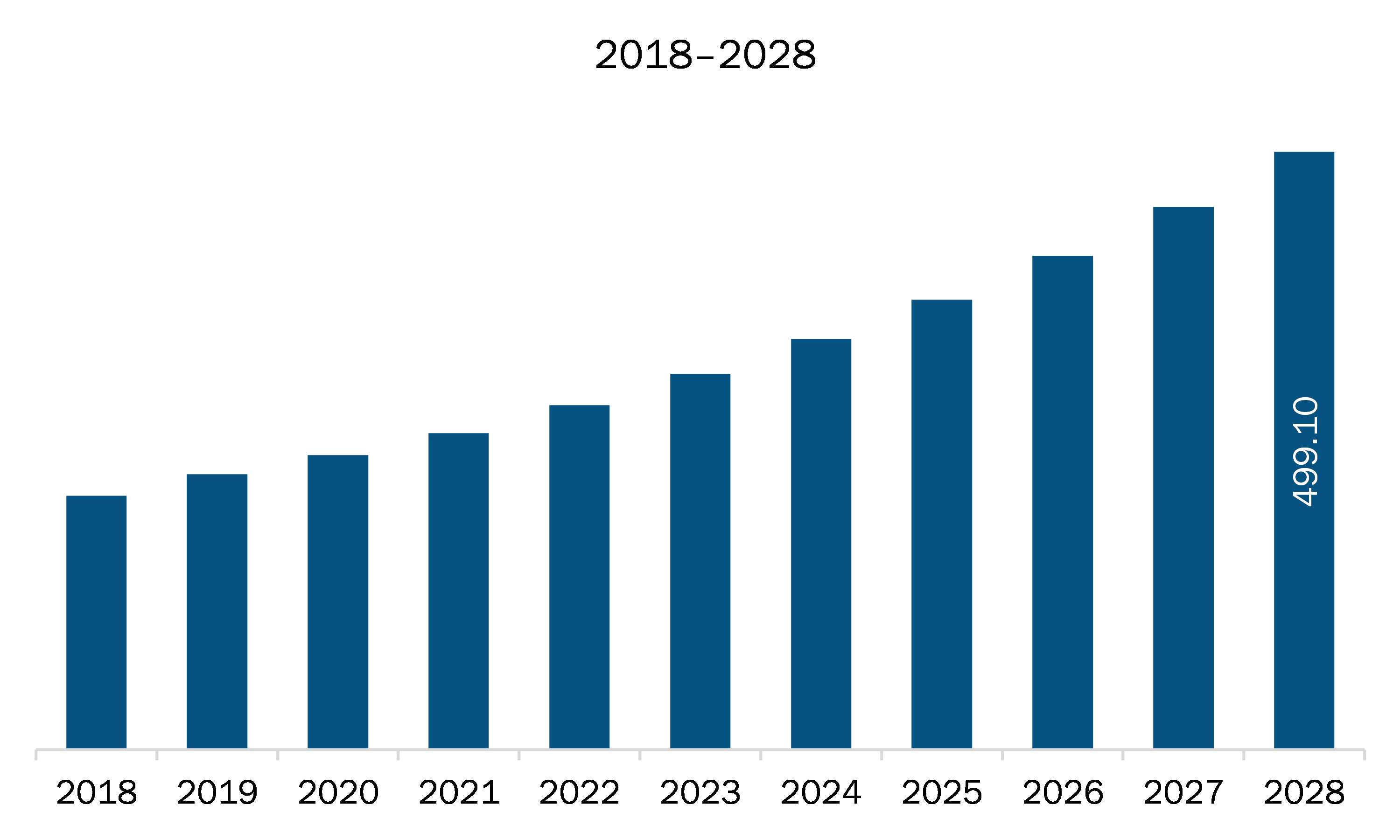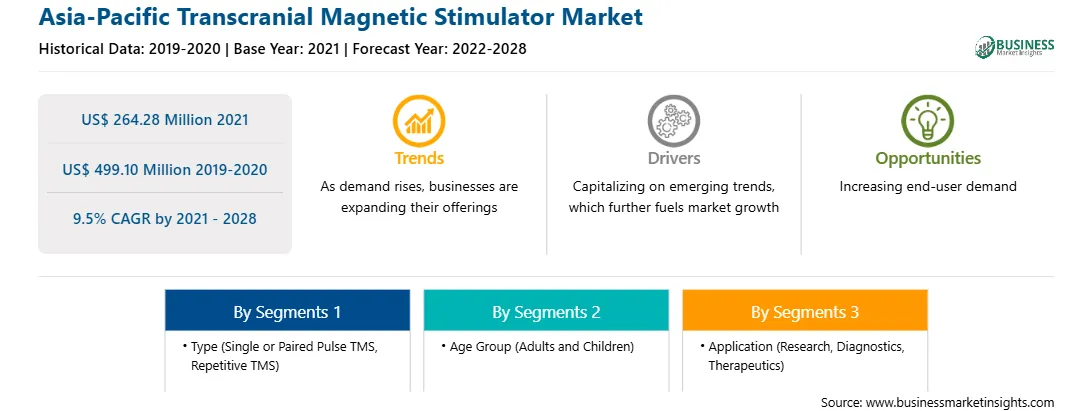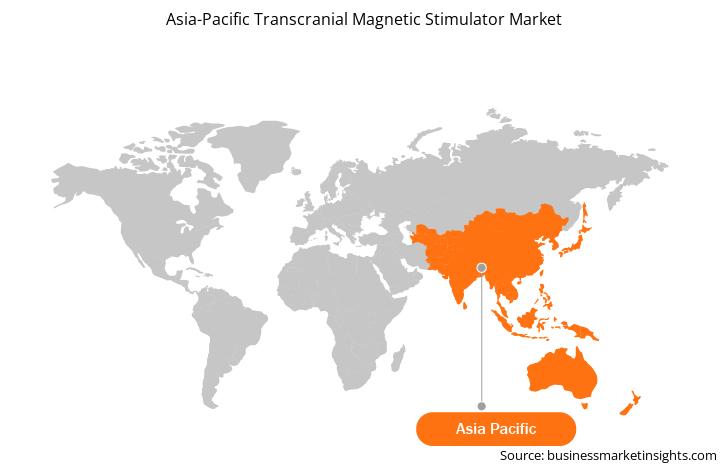APAC region includes countries such as India, China, Japan, and Rest of APAC. This region accounted for high market share of the transcranial magnetic stimulator (TMS) market owing to the large population countries such as China and India, increasing focus of market players, and introduction of new products in the country. Thus, there is a huge potential for transcranial magnetic stimulator (TMS) market during the forecast period owing to the above-mentioned reasons. The APAC region is the fastest growing market for transcranial magnetic stimulator (TMS) across the globe. The factors such as increased in healthcare spending and availability of advanced technology help to boost the growth of the Transcranial Magnetic Stimulator (TMS) market in the region.
In APAC, the COVID-19 pandemic has led to significant slowdown in the economies of China, India, and South Korea, among others. It has disrupted the dynamics of healthcare sectors in these countries. Various companies have closed their manufacturing plants in China. On the contrary, India has escalated the production of medical devices, pharmaceutical drugs, and personal protective equipment. Activities of the transportation sector have been revised, depending on the positivity rate of COVID-19 infection in India, among other countries in the region, which has impacted the trade business of the region. Many international medical device manufacturing companies have their production plants in China, but the country has faced a significant impact of the pandemic. With the rapid pace of vaccination in the countries in APAC, the transcranial magnetic stimulator market is expected to bounce back in the coming years.

Strategic insights for the Asia-Pacific Transcranial Magnetic Stimulator provides data-driven analysis of the industry landscape, including current trends, key players, and regional nuances. These insights offer actionable recommendations, enabling readers to differentiate themselves from competitors by identifying untapped segments or developing unique value propositions. Leveraging data analytics, these insights help industry players anticipate the market shifts, whether investors, manufacturers, or other stakeholders. A future-oriented perspective is essential, helping stakeholders anticipate market shifts and position themselves for long-term success in this dynamic region. Ultimately, effective strategic insights empower readers to make informed decisions that drive profitability and achieve their business objectives within the market.

| Report Attribute | Details |
|---|---|
| Market size in 2021 | US$ 264.28 Million |
| Market Size by 2028 | US$ 499.10 Million |
| Global CAGR (2021 - 2028) | 9.5% |
| Historical Data | 2019-2020 |
| Forecast period | 2022-2028 |
| Segments Covered |
By Type
|
| Regions and Countries Covered | Asia-Pacific
|
| Market leaders and key company profiles |
The geographic scope of the Asia-Pacific Transcranial Magnetic Stimulator refers to the specific areas in which a business operates and competes. Understanding local distinctions, such as diverse consumer preferences (e.g., demand for specific plug types or battery backup durations), varying economic conditions, and regulatory environments, is crucial for tailoring strategies to specific markets. Businesses can expand their reach by identifying underserved areas or adapting their offerings to meet local demands. A clear market focus allows for more effective resource allocation, targeted marketing campaigns, and better positioning against local competitors, ultimately driving growth in those targeted areas.

The transcranial magnetic stimulator market in APAC is expected to grow from US$ 264.28 million in 2021 to US$ 499.10 million by 2028; it is estimated to grow at a CAGR of 9.5% from 2021 to 2028. Neurological disorders affect the brain and nerves of the human body and cause epilepsy and seizures, Parkinson's disease, dementia, autism, Alzheimer's disease, brain tumors, and cerebral palsy, among others. The prevalence of neurological disorders is increasing. The growing prevalence of neurological disorders drives the growth of the Transcranial Magnetic Stimulator (TMS) market. Moreover, Depression is one of the mental disorders observed commonly among people worldwide. As per the data published by WHO in January 2020, more than 264 million people of all ages suffer from depression across the world. Various therapies and medications can treat depression.
APAC transcranial magnetic stimulator market is segmented into type, age group, application, and country. APAC transcranial magnetic stimulator market based on the type was segmented into single or paired pulse TMS, repetitive TMS (rTMS). In 2020, the single or paired pulse TMS segment held the largest share of the market. The APAC transcranial magnetic stimulator market, by age group, is segmented into adults and children. The adults segment held the largest share of the market in 2020. The APAC transcranial magnetic stimulator market, by application, is segmented into research, diagnostic and therapeutic. The diagnostics segment held the largest share of the market in 2020. Based on country, the APAC transcranial magnetic stimulator market is segmented into into Australia, China, India, Japan, South Korea, and rest of APAC. China held the largest market share in 2020.
A few major primary and secondary sources referred to for preparing this report on the transcranial magnetic stimulator market in APAC are company websites, annual reports, financial reports, national government documents, and statistical database, among others. Major companies listed in the report are eNeura Inc.; MagVenture, Inc.; Neurosoft; Nexstim; and REMED.
The Asia-Pacific Transcranial Magnetic Stimulator Market is valued at US$ 264.28 Million in 2021, it is projected to reach US$ 499.10 Million by 2028.
As per our report Asia-Pacific Transcranial Magnetic Stimulator Market, the market size is valued at US$ 264.28 Million in 2021, projecting it to reach US$ 499.10 Million by 2028. This translates to a CAGR of approximately 9.5% during the forecast period.
The Asia-Pacific Transcranial Magnetic Stimulator Market report typically cover these key segments-
The historic period, base year, and forecast period can vary slightly depending on the specific market research report. However, for the Asia-Pacific Transcranial Magnetic Stimulator Market report:
The Asia-Pacific Transcranial Magnetic Stimulator Market is populated by several key players, each contributing to its growth and innovation. Some of the major players include:
The Asia-Pacific Transcranial Magnetic Stimulator Market report is valuable for diverse stakeholders, including:
Essentially, anyone involved in or considering involvement in the Asia-Pacific Transcranial Magnetic Stimulator Market value chain can benefit from the information contained in a comprehensive market report.